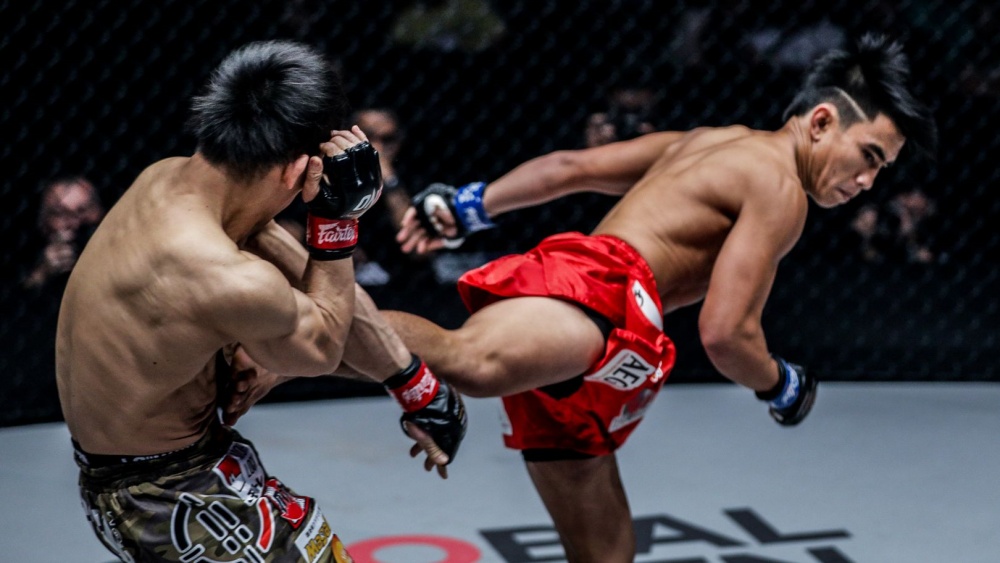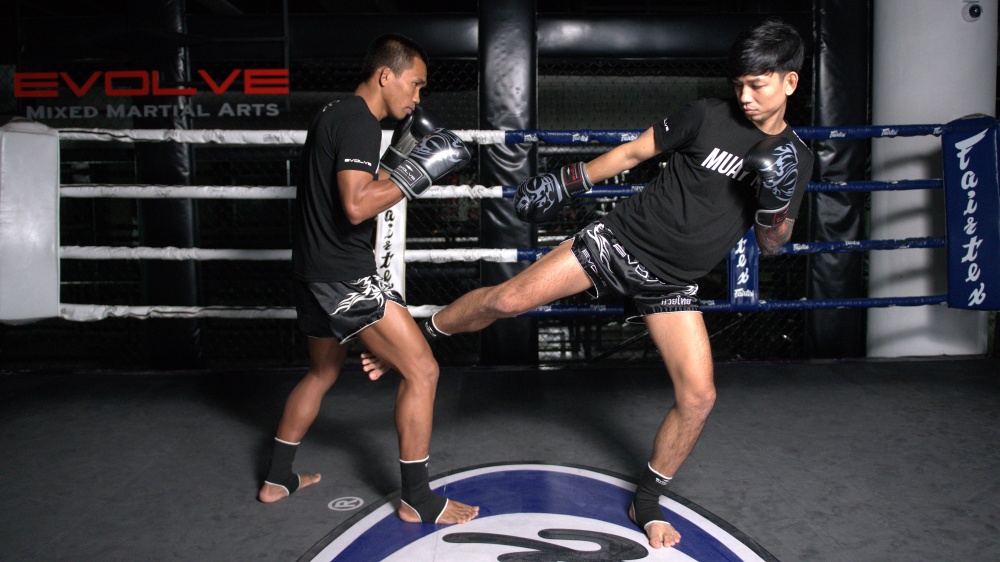Muay Thai is a versatile striking art that allows you to use your fists, elbows, legs, and knees as weapons. Spinning techniques are some of the most electrifying moves used in martial arts, and, when executed properly, they land with enough power to end a fight. These techniques are an excellent way to catch opponents off guard when they’re expecting something else. The key is to set them up properly and use them sparingly.
Spinning kicks are advanced moves you should only focus on when you already have the fundamentals down. This article will explore how to set up and execute spinning kicks.
Spinning 101
The most widely used spinning kick in Muay Thai is the spinning back kick. It’s an interesting name for the technique since you don’t spin when executing it. The kick moves in a straight line, much like a horse would kick behind it.
The spinning part of the technique involves rotating your body before throwing the kick to generate additional power.
The spinning back kick technique was developed as a way to get past an opponent’s guards to score points or land a debilitating blow. The key to getting the most out of the technique is keeping your leg straight as you throw the technique since this shortens the time it takes for your kick to find its target. That little detail is often the difference between landing the technique or your opponent evading it.
The Technique
Here are the different steps you should follow to land it:
- Start facing your opponent while in your kicking stance to execute a spinning back kick.
- Look over your back shoulder while keeping both feet in place. Your feet will naturally pivot as you look back, but try to keep them where you started the technique. Some slight movement of your feet is okay, but you don’t want to change your stance significantly.
- Turn your upper body with your head while lifting your kicking leg off the ground in a straight line. This helps to generate significant torque that will be shortly released on your opponent. Engage your thighs and glutes as you spin your body.
- Keep your toes pointing downwards as your legs reach their target. You want to land with your heel for maximum power.
- Practice, practice, practice until the movement becomes natural for you. That’s the level of expertise you’ll need to be able to land the technique on resisting opponents.
Now that we’ve covered the mechanics of the spinning back kick let’s go over some important pointers that will help you to refine the technique.
1) Practice With A Heavy Bag
Stick to a heavy bag when you first start practicing the spinning back kick. That way, any mistakes you make will hurt a lot less, and the bag won’t try to evade the attack. Stick to the bag until you can accurately hit your target. An effective way to improve your precision while throwing kicks is to tape some parts of the heavy bag you’re using so you can gauge your accuracy better.
One common mistake people who are learning how to throw spinning back kicks make is not rotating their head slowly or not rotating it at all as they enter their spin. Your head should be the first part of your body to turn, and it should be the first part of your body to face your opponent after your spin.
This allows you to see your target instead of kicking blindly. Turning your head also leads to the rest of your body following suit, increasing the torque, which increases the power the kick lands with.
2) Learn How To Execute The Technique Using Both Legs
Learning how to execute any technique out of the orthodox and southpaw stances makes you less predictable and harder to counter. It also helps to improve your understanding of the technique. Executing a move with your strong side is one thing while doing it with your weak side comes with added challenges. Getting past these challenges improves your understanding of the fine details that make the technique work.
Fighters who can only throw spinning techniques from one side will be at a disadvantage in competitive settings. Opponents would quickly figure out their spinning attacks only come from one side, making it easier for them to evade.
Learn how to perform spinning techniques from both sides, and your opponents will have a considerably harder time trying to figure out which direction your next spinning kick will be coming from.
3) Avoid Cross-stepping
It’s almost natural to want to step one foot across the centerline when starting a spinning technique, but that only telegraphs your intentions. It also opens you up to a counter since it gives your opponent a bigger target to attack.
Generally speaking, you never want to cross your feet when moving or performing techniques. There are very few exceptions to this in Muay Thai. Always start your spin with your feet in their normal position in your stance to avoid telegraphing your attack and to generate maximum power with your spin.
4) Follow Through When You Kick
The spinning back kick is most effective when you follow through. It works a lot like a push kick; you want to kick through the target. It’s a critical difference between Muay Thai and karate, which teaches students to kick like a whip.
The kick should land with so much follow-through it should push your opponent backward if it doesn’t knock them down.
5) Aim To Land With Your Heel First

Your heel should be the first part of your body to make contact with the target when performing a spinning back kick. Landing with your heel gives the strike more power, plus your heel is more likely to do damage than the balls of your feet.
A simple trick you can use to ensure your heel lands first is to point it towards the ceiling as you enter your spin.
You may also like:
















